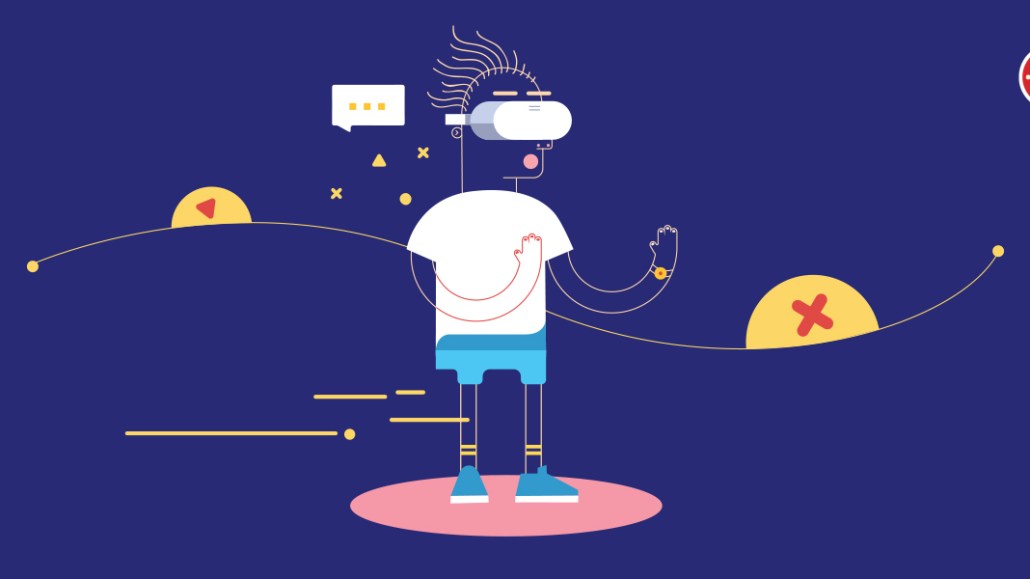
As I was speaking at Digiday’s 2018 Artificial Intelligence Marketing Summit about “Human-Centered Design”, something struck me: When I looked around the room, it was filled with, well, humans. Yet there I was, imploring a room full of eager, red-blooded marketing professionals to design the “human” way. Our eagerness to dive right into what’s next often leads to conversations about technology and innovation that are devoid of humanity. If AI is meant to automate and scale human characteristics for the benefit of users, it seems to me that human-centered design becomes a discipline that requires our mastery.
To truly unlock the potential of human centered design, we must lean into what makes us human: our relationships, our thoughtfulness and our emotions. We must believe that our “human-ness” is the very thing that allows us to truly take advantage of the awesome technology at our fingertips. At imre, we have a few core principles to ensure that we are solving consumer problems with a human approach to technology.
Party of one
We recently created a campaign using virtual reality to recreate stories from the past, and in doing so, I learned something that has had a lasting impact. The experience of using VR in itself, albeit truly incredible, pales in comparison to watching someone experiencing VR for their first time. This is a reminder that we must design technology with a particular person in mind. This one-to-one view of communication ensures the experience is meaningful, contextual and wonderful. If you are able to deliver this personal approach, you can then bottle up the emotion of that experience and employ technology to scale that interaction. Imagine for a second trying to buy a birthday gift for all of your friends versus buying a gift for just one of your friends.
Fear factor
Fear may be the most motivating human emotion. AI is surrounded by fear. Fear of automation replacing our jobs. Fear that our understanding of truth may be tainted with human emotion and bias. Fear that our robot overlords won’t treat us well when we are forced to serve them as pets. But typically, what accompanies fear is opportunity.
The new millennium brought with it a paradigm shift in how creatives developed art. Adoption of computers took off like a rocket ship and opened up an entire world of possibilities. I was in art school at the time studying fine arts and almost all of my classmates agreed—those graphic design kids certainly weren’t creating art. Then, things quickly changed. I remember the first time I used Adobe Illustrator to separate out color plates to create pixel-perfect screen prints. It felt as though I stumbled onto the cheat codes for a video game. The point is that we tend to fear technologies that require us to reconsider our process, but we must always remember that comfort is the enemy of progress.
Hooked on a feeling
“Most of us think of ourselves as thinking creatures that feel, but we are actually feeling creatures that think.” — Jill Bolte Taylor, My Stroke of Insight: A Brain Scientist’s Personal Journey.
As we continue to feel overwhelmed by data and become more reliant on machines to make sense of it all, we must always remember that we are feeling creatures, and that we validate our feelings through relationships with other feeling creatures. When I want someone to understand how I feel, I almost always tell them a story because I want them to feel what I was feeling, even if just for a moment. An algorithm can’t do this. It can’t recall what it was like the first time you ate a perfect slice of pizza or laugh at the irony of why you lost your first job.
Tide did this expertly with their “It’s a Tide Ad” campaign that hijacked the 2018 Super Bowl. They were able to attach their brand of clean clothes to familiar and beloved ad campaigns such as the Old Spice “Smell Like a Man, Man” campaign. This execution was a brilliant example of understanding how their audience feels and creating the perfect moment to deliver their message in the context of that feeling.
The irony of it all is that the best way for us to be more human is to just be human. Trust your instincts, don’t overthink it and treat customers like they’re people. At imre, we call ourselves “creative-led and tech-enabled.” We embrace the role of humanity over the role of technology. Technology is the container, but emotion is the element. I believe that training designers to access human emotion on this level will both totally elevate the potential for AI and continue to transform our role as marketers.
More from Digiday

Ad Tech Briefing: Start-ups are now table stakes for the future of ad tech
Scaled ad tech companies need to maintain relationships with startups, when the sector is experiencing ongoing disruption due to AI.

Inside Kristi Argyilan’s RMN playbook: Lessons from the ‘godmother’ of retail media
Uber’s global head of advertising Kristi Argyilan says the future of retail media hinges on real-time relevance, brand differentiation, and breaking free from a one-size-fits-all playbook.

Digiday+ Research: More than half of marketers invest in TV and streaming, with an eye on impressions and branding
The majority of marketers are directing ad spend toward TV, with a focus on ads that drive impressions and branding.





